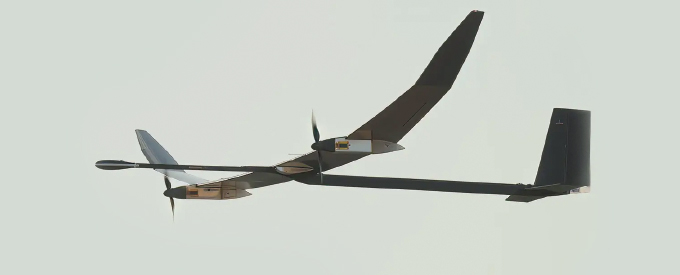2023-08-10
BAE Systems’ Drone PHASA-35 Offers Alternative to Satellites
BAE Systems’ PHASA-35, a solar-electric, ultra-light weight High Altitude Pseudo Satellite (HAPS) Unmanned Aerial System (UAS), has successfully completed its first stratospheric flight trial.
The novel aircraft, designed by BAE Systems’ subsidiary Prismatic Ltd., provides an alternative and flexible approach to conventional systems such as satellites or conventionally powered aircraft for the provision of persistent and cost-effective imagery and communications.
In a remarkable display of aviation innovation, the solar-electric drone achieved a stratospheric flight trial in June, surpassing an altitude of 66,000 feet before safely landing.
Conducted in New Mexico, U.S., the trial provided engineers with valuable insights into the performance of this experimental drone in the outer reaches of the Earth’s atmosphere, over a 24-hour period.
PHASA-35, which has a 35-metre wingspan and carries a 15kg payload, uses a range of world-leading technologies including advanced composites, energy management, solar electric cells and photo-voltaic arrays to provide energy during the day which is stored in rechargeable cells to maintain flight overnight.
Significant Milestone
BAE Systems acquired Prismatic Ltd in September 2019, having worked together on the development of PHASA-35 since 2018.
The flight marks a significant milestone in the drone’s development which began in 2018. Intended to operate above the weather and conventional air traffic, it has the potential to provide a persistent and stable platform for various uses including ultra-long endurance intelligence, surveillance and reconnaissance, as well as security.
Designed to offer an enduring and steady platform for monitoring, surveillance, communications, and security purposes, the drone aims to fulfil the needs of military and commercial customers. By integrating with various technologies and assets, it promises to deliver capabilities that surpass those provided by current air and space platforms.
It also has the potential to be used in the delivery of communications networks including 4G and 5G and could be used in a wide range of applications, such as disaster relief and border protection, as an alternative to traditional airborne and satellite systems.
The PHASA-35 programme sits within FalconWorks, a new centre for advanced and agile research and development within BAE Systems’ Air sector, aimed at delivering a range of cutting-edge combat air capabilities to the UK and its allies.
Performance Evaluation
The successful trial comprehensively evaluated the performance of the experimental system across various domains. This trial serves as the initial step in a series of planned assessments, aiming to validate test points, support development activities, and confirm system performance.
Ultimately, these trials will pave the way for the international deployment of PHASA-35 in both defence and commercial markets.
Dave Corfield, CEO of Prismatic Ltd, explained: “This is a fantastic achievement for everyone involved and shows the commitment of BAE Systems to invest in new technologies and markets. PHASA-35’s first stratospheric flight demonstrates that this vehicle is on track to become the go-to system for long endurance, high altitude and communications applications in the future.”
He added: “The successful trials are a testament to the hard work of the team that we have built over the last couple of years within Prismatic and across our partner companies including Piran, Amprius, Microlink, Honeywell, PMW Dynamics and the Met Office. I look forward to the next steps as we develop this unique system.”
Cliff Robson, Group Managing Director for BAE Systems’ Air Sector, stated: “PHASA-35 is breaking new ground — opening up the stratosphere to new possibilities. The team, which brings together BAE Systems’ know-how from across the globe with innovative solar and power management technologies, demonstrated tremendous commitment as they tackled the challenges associated with novel technologies and approaches. This partnership approach is key to our ability to enhance our defence expertise with new thinking and technologies.”
The latest trials were held at Spaceport America in New Mexico within the White Sands Missile Range. These trials were sponsored by the U.S. Army Space and Missile Defense Command Technical Center, with support provided by personnel from Naval Surface Warfare Center, Port Hueneme Division, Detachment White Sands.


No Comments